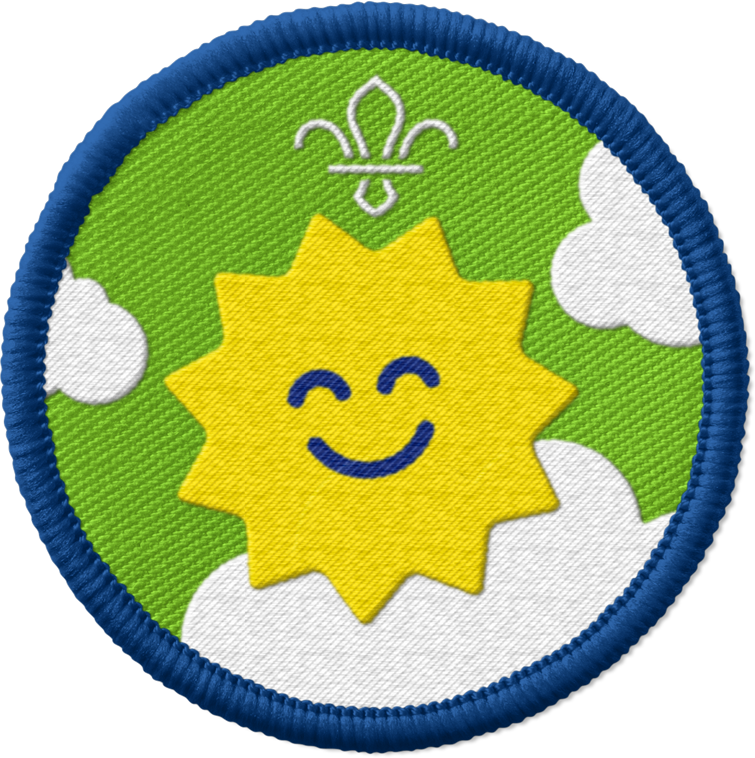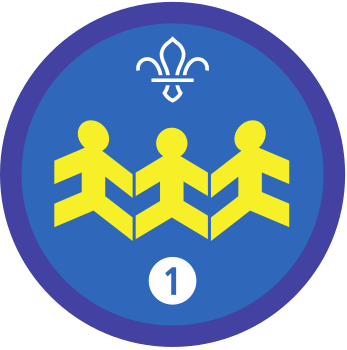Learn about what makes you happy
You’ll need
- A4 paper
- Coloured pens or pencils
- Blocks, such as Jenga blocks, Lego bricks, milk bottle tops or pieces of paper
- Sticky tack, sticky tape or masking tape
- Stickers (optional)
Before you begin
- Use the safety checklist to help you plan and risk assess your activity. Additional help to carry out your risk assessment, including examples can be found here. Don’t forget to make sure all young people and adults involved in the activity know how to take part safely.
- Make sure you’ll have enough adult helpers. You may need some parents and carers to help if you’re short on helpers.
Planning this activity
- Prepare the blocks by writing different feelings on each of them. Try to include a mix of feelings, such as, happy, sad, upset, angry and so on. You could write directly onto the blocks.
- Alternatively, you could write on sticky labels and peel and stick them on to the blocks.
- You could also write the feelings onto paper, cut them out and use sticky tape, masking tape or sticky tack to attach the paper to the blocks.
Offering support for this activity
- You could look out for key dates in the calendar that you could plan your talk around, such as World Mental Health Day or Children's Mental Health Week.
- This might be the first time that a young person has explored the issue of mental health or thought about speaking with someone about this. If a young person shares their own mental health problems, let them know they can talk to you afterwards and that they can get support from Childline (call 0800 1111 or go to childline.org.uk).
- Remember to follow the ‘Young People First’ code of practice (the Yellow Card) in any conversations, and read our guidance on supporting mental health in Scouts.
Talk about feelings
- Gather everyone into a circle and tell everyone you’re going to do an activity all about feelings. You could get into smaller groups if you want to and if you have enough adult helpers
- Arrange the blocks in the middle of the circle.
- Everyone should take it in turns to take one block and describe the feeling on it. Adult helpers or young leaders can help anyone who may need it with reading.
- If anyone wants and feels comfortable to, they could talk about a time when they’ve experienced the feeling or emotion on their block. This could include young leaders and adult volunteers sharing their experiences of their feelings too.
- Remind the group that everybody can experience a whole range of feelings. They’re natural and part of our mental health. However, experiencing some feelings, such as anger or sadness, for too long can mean that someone’s mental wellbeing is low. They should take action to improve it or get support.
- Everyone can share ideas on where to go for support. This could be talking to someone they trust, such as family, friends or a teacher, contacting Childline or speaking to their GP.
- Ask everyone to think about how they can create happy feelings, especially when they’re feeling sad, upset or angry. People may think about what makes them feel happier, such as playing football with their sister, watching their favourite cartoon, reading their favourite book or cuddling a pet.
- Ask everyone to think about who they can speak to when they’re feeling sad, upset or angry. People may say a parent or carer, a friend, a sibling, a pet, a doctor or charity or a teacher.
- Now, everyone should write down or draw a happiness poster. It should be full of things that make them happy or people they can speak to when they feel sad. Everyone’s ideas will be a bit different and that’s OK.
- When you’re finished, bring the posters together. Ask if anyone wants to talk about their poster if they’re happy and comfortable to. No-one has to share or show their poster if they don’t want to and they can keep it private.
- Tell everyone that we can keep our posters to remind us of what makes us happy and who we can speak to for help.
Reflection
This activity helped everyone to explore some different feelings and hopefully feel more confident or able to identify and communicate their own feelings. Being comfortable talking about how we feel can improve our wellbeing and make us happier.
It also started everyone thinking about things that improve and support their wellbeing. Did anyone learn something about themselves that they’re comfortable to share? Does anyone want to use their ideas in the future – for example, are there any activities they want to do more of or plan into their lives more regularly?
Safety
All activities must be safely managed. You must complete a thorough risk assessment and take appropriate steps to reduce risk. Use the safety checklist to help you plan and risk assess your activity. Always get approval for the activity, and have suitable supervision and an InTouch process.
- Rubbish and recycling
All items should be clean and suitable for this activity.
The feelings used on the blocks could be simple ones, such as happy or sad, or trickier feelings, such as confused or determined.
People can work in small groups or as a whole group, depending on what will work best for your group.
If people aren’t confident with reading, they could show their block to the person leading the activity or a friend to read out. Why not try using emojis or pictures instead of words in this activity? You might find that people interpret a picture in different ways, giving you even more feelings to explore together.
People may prefer to work in groups or pairs when suggesting their ideas of what makes them feel happier. If someone needs support in writing down their ideas or drawing, give them the opportunity to work with someone else to help them where needed. You could also have pictures, scissors and glue sticks available for people to create collages rather than writing or drawing.
Make sure everyone knows they don’t have to share anything about themselves if they don’t want to. It’s important that everyone feels comfortable in this activity, as well as knowing how they can access support.
All Scout activities should be inclusive and accessible.
Find out more about mental health, including the five ways to wellbeing, and take action with A Million Hands.
Everyone could ‘Build a wellbeing box’ full of positive messages and interesting items, tune into their emotions with a gratitude scavenger hunt or get creative exploring emotions and colour with What colour am I?
Give everyone the opportunity to share their thoughts and feelings wherever possible. Ensure that everyone feels respected, comfortable and valued.

